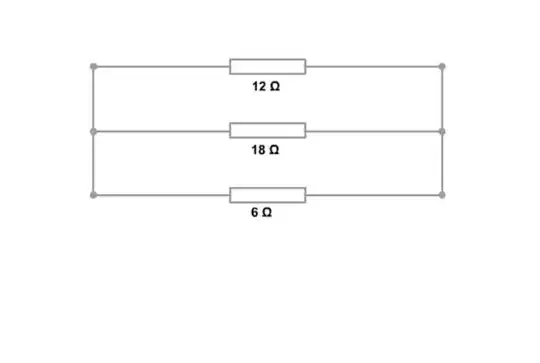For calculating net resistance in a combination of parallel resistors we use 1/R=1/r1+1/r2+1/r3....but electricity must travel through least resistance. Then how does this relation come in use? I am definitely unaware of some concept on this. The least 'r' should be the net resistance instead of sum of reciprocals..
- 220,844
- 803
1 Answers
Because you may imagine that the electrons "pile up" in a queue to get through the smallest resistor, and when the queue is too damn long, this resistor is not anymore the easiest way to the other side for the lastcoming electrons.
A step by step thinking is this:
- The first electron arriving goes towards any resistor, since at this moment it doesn't know which is the smallest. It then reaches the resistor and starts to be slowed down.
- The next electron as well does not know which resistor is smaller, but at one resistor there is already an electron struggling to get through. They repel, so this second electron will not choose this resistor but any of the remaining.
- This continues, until one electrons arrives at each resistor.
- The next coming electron now has to choose. The resistor showing the smallest repulsion is the one where the previous electron has moved the furthest. This must be the weakest resistor, so here this next electron qeues up.
In the end, if one resistor is just half of the others, then 2 electrons will arrive here before one will choose to arrive at another one. This is the reason for more current passing through the weakest resistor.
At the same time you can also say that the resistors now share the crowd of electrons. If the weaker resistor was the only one in the circuit, then all electrons had to go this way. The queue would be long. The pressure from one side to the other is still just what the battery sets. E.g. 5 V. Now in this parallel setup, the pressure is the same (because the battery is the same) so the same rate of electrons will pass through the weakest resistor. But now there are also electrons passing through the other resistors. At a slower rate, yes, but this indeed looks like more electrons in total are passing through the parallel setup - the current is higher - than it would do through even the weakest of the resistors alone in a series setup.
This is an intuitive way to accept the fact, that the reciprocal-resistance formula results in an overall (equivalent) resistance that is smaller than even the smallest resistance in the set.
- 53,191